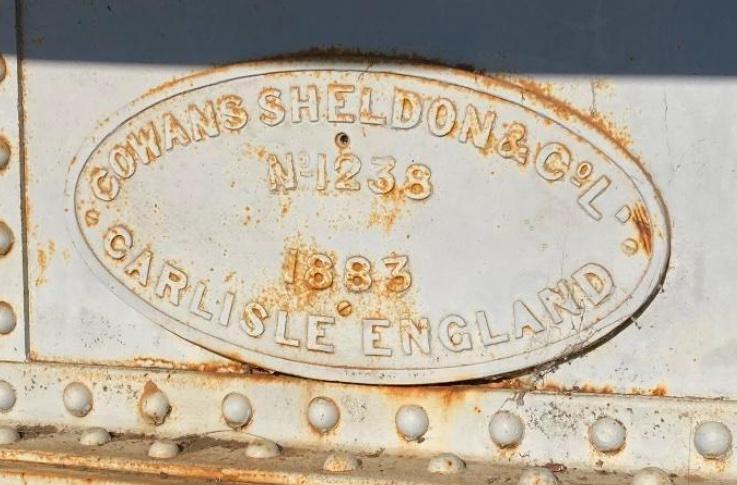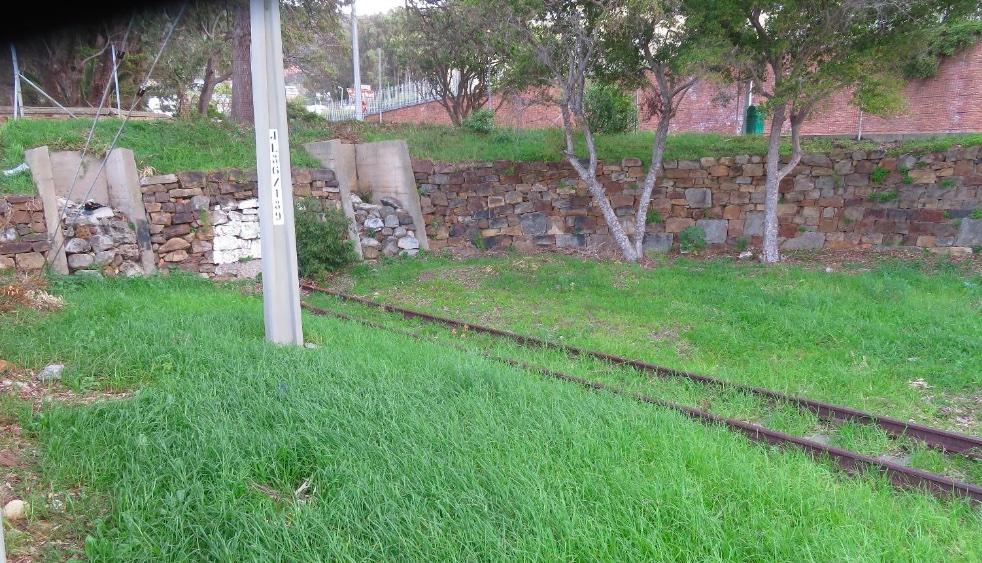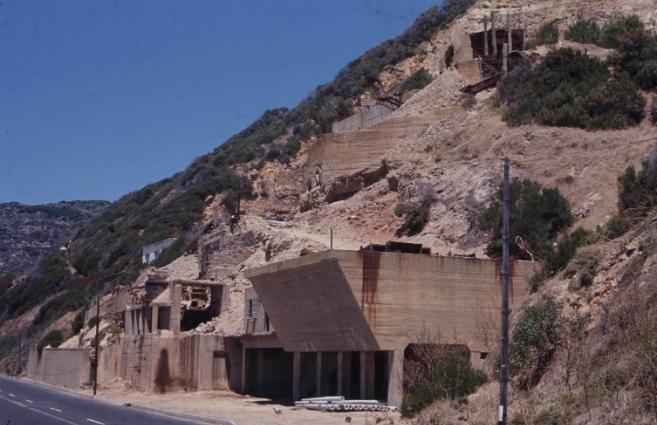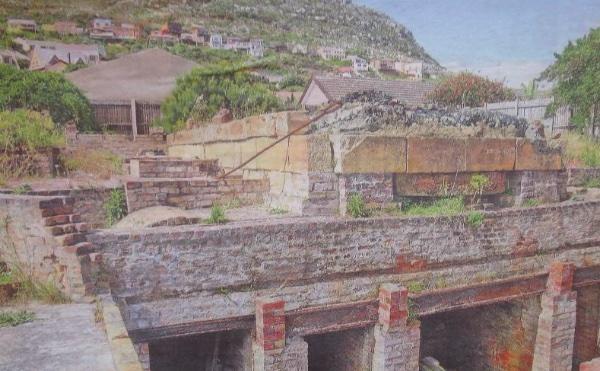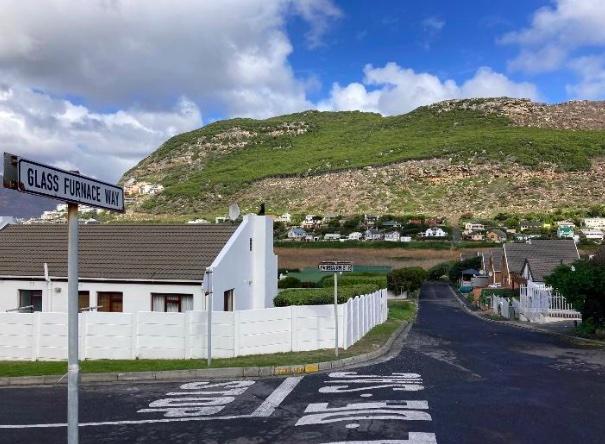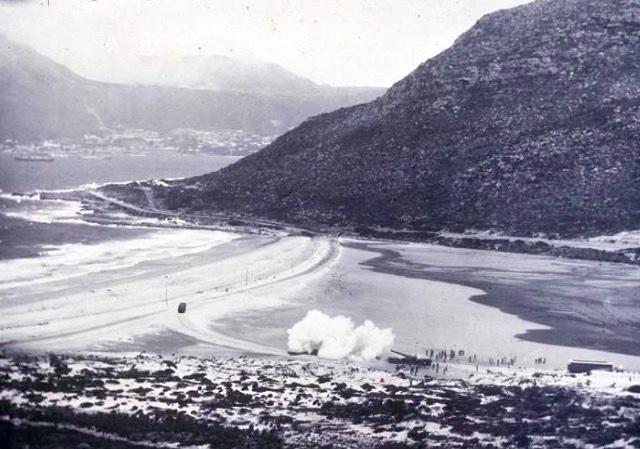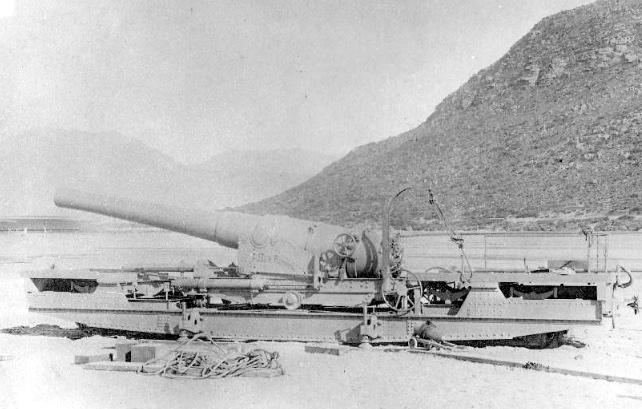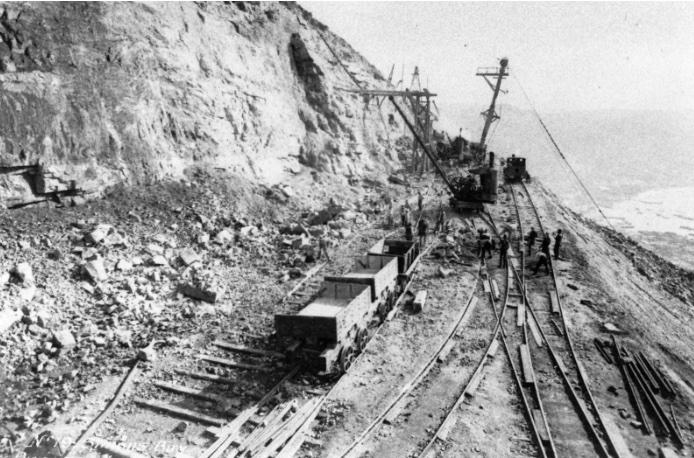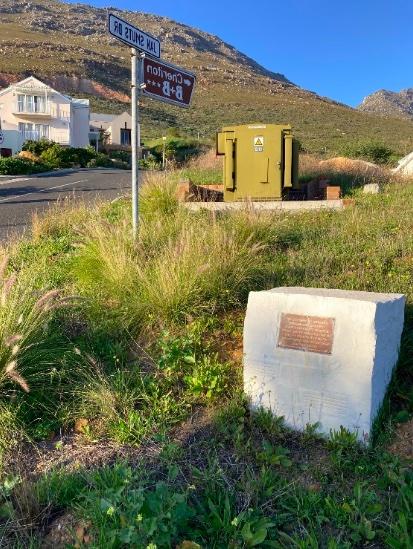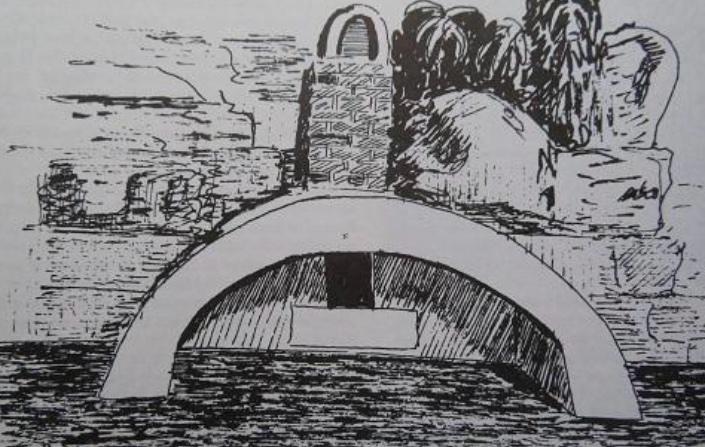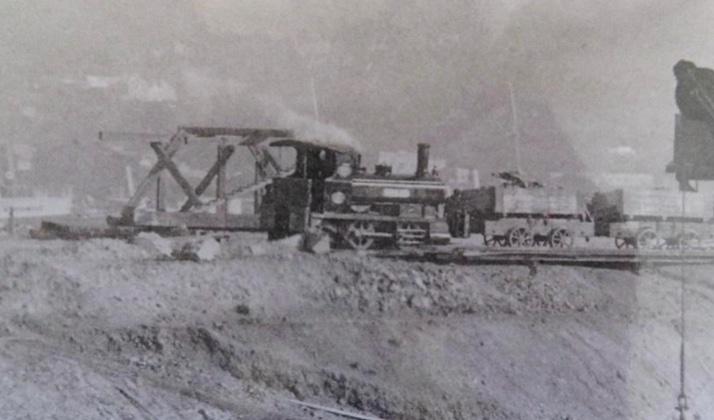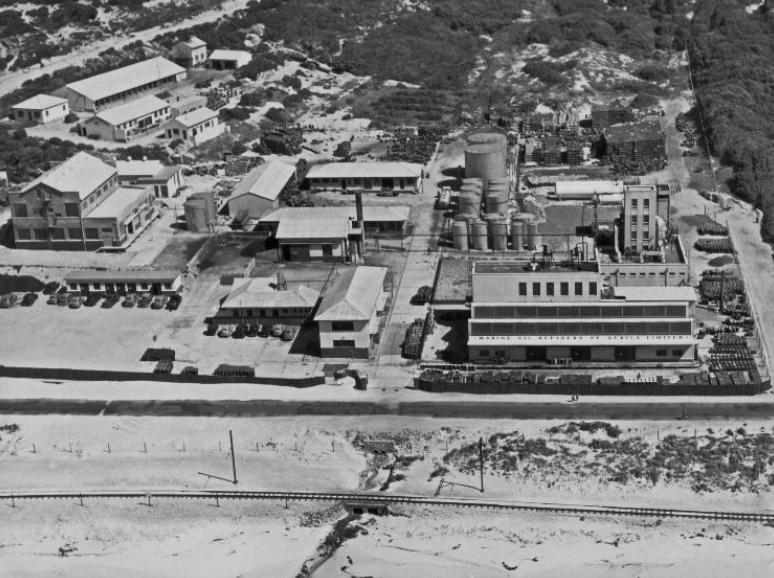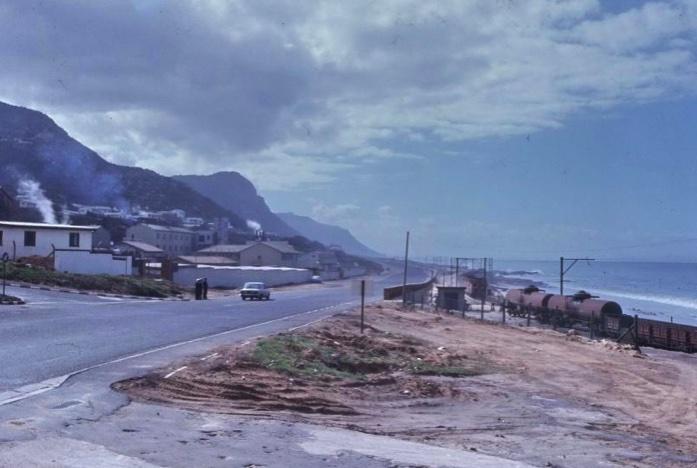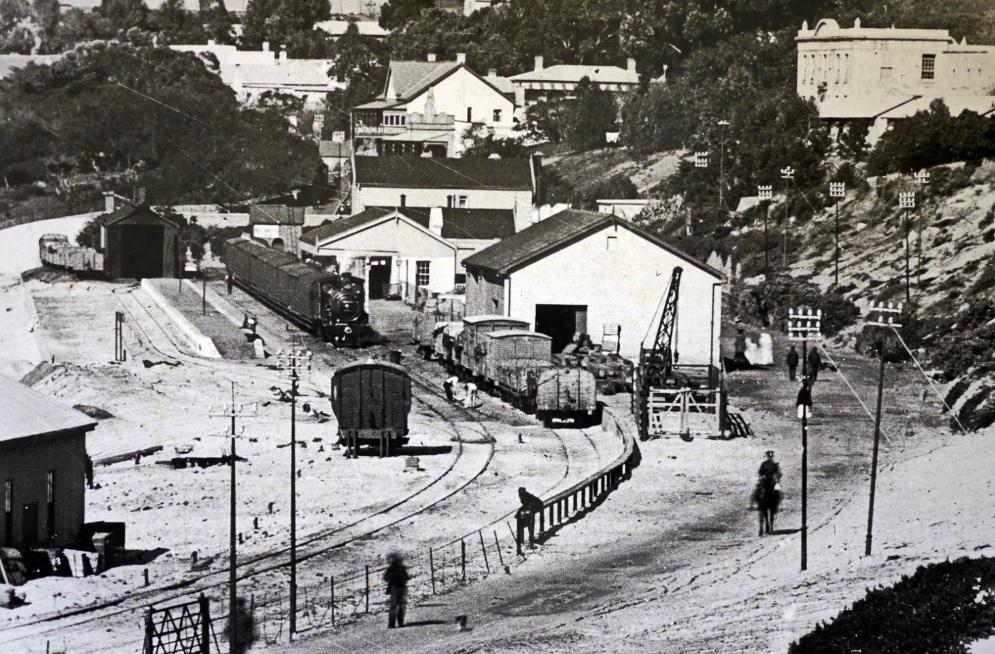
Disclaimer: Any views expressed by individuals and organisations are their own and do not in any way represent the views of The Heritage Portal. If you find any mistakes or historical inaccuracies, please contact the editor.
When the railway from Cape Town reached Simon’s Town in 1890 it resulted in major changes to life in the town - the journey now taking only a few hours instead of at least a whole day. It was a substantial benefit to the only major industry in the Southern Peninsula at that time, the Royal Naval Dockyard. There was a proposal to extend the line with a siding into the Dockyard itself but, unfortunately, this never materialised and all freight had to be unloaded into the goods store (now offices of a dive school) and then transferred by road. It is probable that, as the siding would have to pass through the grounds of Admiralty House, it was not considered a viable option! At the opening ceremony in 1890 it was, however, suggested that the line would be extended the 7ks to Miller’s Point – but this, too, did not materialise.
Nevertheless, access to the railway enabled new industries to be established in the South Peninsula-including the Glencairn Quarry, Glass Factory and Marine Oil Refinery-which all needed to be serviced by railway sidings-now gone.
The Simon’s Town Turntable
At Simon’s Town station there was, however, a short siding which serviced the turntable - necessary in the days of steam locomotives as the visibility from an engine, especially with a tender, running in reverse was not ideal, access to controls was difficult and most engines travel slower in reverse.
The Simon’s Town turntable was installed in 1890, having been manufactured by Cowans Sheldon and Co Ltd in Carlisle in the UK in 1883. It was 16.75 m in length which accommodated locomotives up to the Class 6J but not the Class 19 D used later. However, with the electrification of the line in 1928, it was only needed for the steam powered goods trains and in 1960s they were superseded by diesel locos which were easier to control when running in “reverse” mode.
The turntable was, therefore, removed in about 1962 and transferred to Loerie near Humansdorp on the Port Elisabeth to Avontuur Line in The Langkloof. It was easily modified to accommodate the 2 ft (610 millimetres) gauge in service on that Line. It was especially useful to turn the steam locomotives which were taking limestone from the quarry at Loerie to the E P Cement company at Chelsea - until replaced by diesels in 1972 - and also for the steam hauled Apple Express tourist train which turned at Loerie from 1965 until it was discontinued in 2010.
Surprisingly, it is still in remarkably good condition with the makers nameplate still in situ – the date, 1883, suggests that it may initially have been installed at Kalk Bay - as that was when the line reached there – and then moved to Simon’s Town when the line was extended. Maybe a “fairy godmother” could wave her magic wand and return it to Simon Town, where, with some modification to the catenary support pylons, it could be fitted back to the original siding as the circular stone embankment is also still in very good condition.
Makers Plate
Turntable in situ in Loerie
Unfortunately, despite an extensive search, no photograph of the Simon’s Town turntable in situ has been found – so if anyone has one it would be most appreciated.
Turntable embankment in Simon’s Town
Glencairn Quarry
The Glencairn quarry opened in 1898 and was operated by the Divisional Council until World War I. After the War it was reopened by an engineering firm, Strong and Moore, until it closed in 1978, mainly due to environmental concerns. It produced stone crushed to various sizes which was used for construction - especially of roads, railways and the Simon’s Town Dockyard. In about 1900 James Graham installed the crushing plant and a slip siding which connected it to the suburban mainline on the Sunny Cove side, but having to cross the Main Road. This, needless to say, caused considerable inconvenience to road traffic when a train was crossing and as traffic increased, especially with an increase in tourists, this led to the removal of siding in 1957 when the Main Road was widened. Thereafter until its closure in 1978, it was necessary to use road transport.
Glencairn Quarry showing hopper beneath which the trucks were filled
Since then, there have been many suggestions of how to utilise the quarry, including an aviary for raptors and a hotel - but so far it has only been used by the False Bay Sports Shoot Club as a shooting range, a rehearsal venue for the Quarrymen’s Male Voice Choir and an occasional Rave.
Again, we have no photograph of the railway siding in action.
Glencairn Glass Works
In 1902 Anders Ohlssen established a glass factory in Glencairn to supply his brewery in Newlands with bottles. The choice of this site was on account of the local supply of remarkably pure sand, kaolin (China Clay) and limestone - and the existence of a railway siding from the mainline for transport of the end product up the line to his Newlands Brewery and the supply of coal needed for the furnace. The siding had been built in 1900 by the Salt River Cement Company to transport sand, and possibly limestone, to its Salt River Works but this closed in 1902. The Glass Works only functioned until 1906 when it closed as was not economically viable and the supply of kaolin was exhausted.
Unfortunately, despite a detailed plan to restore it as part of a Heritage site in 2013, no funding could be obtained and the site was sealed with new houses built above it. The only reminders of its existence being the road named Glass Furnace Way in Glencairn.
Glencairn Glass Works prior to being buried
Site behind last houses on right
In 1902 the siding had been used for the test firing of a 9.2 inch gun which had been modified in the Salt River Cape Government Railway Workshops to be carried on a Type U7 well wagon - this was needed as a result of the lack of heavy artillery for the British forces during the Second Anglo Boer War (South African War). It was at the time the heaviest weapon ever mounted on railway wagon and the forerunner of the massive rail- guns used in both World Wars. Originally named “Sir Redvers” after Sir Redvers Buller, it was later changed to Kandahar after Lord Roberts of Kandahar. It was intended to use it against the Pretoria fortifications but, when Pretoria was left undefended by the Boers, it travelled to Belfast in the Eastern Transvaal. It arrived after peace had been declared on 31 May 1902 and was never used in combat.
Test firing of 9.2 inch gun in 1902
Kandahar
Jackson’s Simon’s Town Quarry
The construction of the East Dockyard and the Selborne Dry Dock started in 1900. The stone needed for some of the buildings and for the fill to create the warfs came from two quarries on the northern slopes of Simonsberg, the scars of which are still obvious today. To transport the stone from the quarries to the dockyard a (UK) Standard gauge (4ft 8.5inches/1.435 metres) railway was built which descended along what is now Runciman Drive as it curves around the Old Burial Ground – where there is now a memorial to the railway at c/o Runciman and Jan Smuts Dives.
Jackson’s Quarry siding
Memorial on Runciman Drive
It then passed under Queens (Main) Road and turned left through what is now the Naval Sick Bay. Close to this intersection was situated what was initially thought to be a “Hot shot oven” which provided heated cannon balls for the Beotselaar Battery on the seaward side of the Martello Tower, a considerable distance away. A more recent study, however, suggests that the structure was a way-station related to the railway.
So-called “Hot Shot Oven”
Train en route to dockyard
Another urban myth is that one of the steam engines used in the project is now in a park at the corner of Belvedere and Keurboom Roads in Claremont – but this American-built engine has a different provenance.
Marine Oil Refinery
In the early 1940’s a Mr F C Jameson and two van Zyl brothers were involved in a Shark Liver Venture and needed an area in which to erect a factory but, because of the unpleasant smell produced in the process, it needed to be remote from a built-up area. The Mayor of Simon’s Town, L.C. Gay, mindful of the potential of such a venture to provide employment to the large number of workers from the Naval Dockyard, now unemployed as a result of the end of World War II, facilitated the allocation of the area of land at the bottom of Dido Valley for the project, with the full approval of the Administration and the Government Health Department.
So, on this windy waste of white sand swept by the strong southeaster in summer, came into being the Marine Oil Refiners of Africa Limited. It became a large and successful enterprise, earning much foreign exchange and employing a large labour force. It produced 500 U.S gallons (1900 litres) per day and a wide variety of products, including candles, medical oils (especially Vitamins A and D) and various grades of oil used in paint manufacture and other lines.
A railway siding was built which, in addition to a large fleet of road tankers, provided the means to deliver the raw materials, fuel oil and coal for the furnaces and take away the end products.
Marine Oil Refinery of Africa Limited
Tankers and trucks in the siding
At the time there were plans to build a fishing harbour adjacent to the factory so as to facilitate the trawlers’ delivery of their catch directly to the factory – but this never materialised.
In 2001 the factory closed mainly because of environmental concerns - especially asbestos and nickel- and, even after demolition of the factory in 2005, the rubble was so toxic that only around 2020 had the levels fallen enough to allow the commencement of what was to become the Harbour Bay Shopping Centre. At about this time the railway siding was removed – the last reminder of the Forgotten Railway Sidings of the South Peninsula.
Main image: Simon’s Town Station in 1905 showing the goods shed. The turntable would have been behind the train in the station.
This article first appeared in Simon's Town Historical Society Bulletin 2022.
Comments will load below. If for any reason none appear click here for some troubleshooting tips. If you would like to post a comment and need instructions click here.

